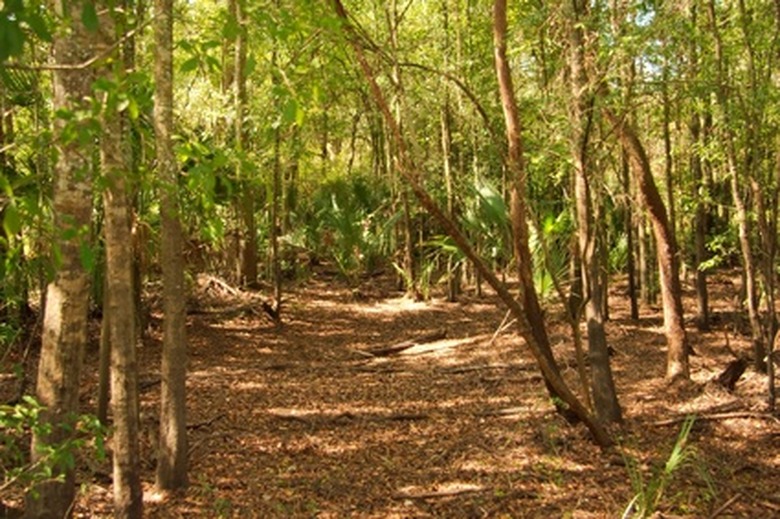Soil Types In Florida
Florida's soils are quite unlike those of its surrounding states. Out of the 12 soil types in the United States, eight are represented in Florida. The most common types are dark, with some being acidic and others being rich in organic matter. The soil is different in the southern portion of the state, where bogs and marshes are more common.
Alfisols
Alfisols
Alfisols are clay-rich soils that usually form underneath forests, but can be found underneath other vegetation as well. The subsoil is rich in nutrients, making these soils useful for agricultural purposes, but can deteriorate quickly when eroded. Because of the clay, the soils can have a tendency to retain moisture. They are found on Florida's east coast, on the northwest coast, and in the southwestern-most regions.
Entisols
Entisols
These soils are quite undeveloped, and are found most frequently in areas exposed to high erosion, such as slopes, sand dunes and flood plains. They are found most frequently on the south coast, the panhandle, and central Florida.
Histosols
Histosols
Histosols are dark and rich in organic material. They are good agricultural soils, but will deteriorate quickly if the soil is depleted of moisture. Found primarily in swamps and marshes, they are most common in southern Florida between the two coasts, south of Lake Okeechobee.
Inceptisols
Inceptisols
Inceptisols can be found in the Everglades and close to the central east coast. They are young soils, and as such are quite often very shallow. They can be found in a wide range of environments. Often bedrock is immediately beneath the soil.
Mollisols
Mollisols
Mollisols are not common in Florida, but are scattered throughout the state. Like histosols, they are dark and rich in organic material; however, they are found primarily beneath grasslands rather than marshes and swampland. They are excellent for agriculture and retain significant amounts of water.
Spodosols
Spodosols
These soils are quite common in Florida and are found primarily in the central regions of the state. They do not retain water very well due to their high sand content, but can be used for agriculture in areas where there is a lot of rainfall. They can be identified by the very light-colored layer a few inches beneath the surface, and the iron-rich layer beneath that.
Ultisols
Ultisols
These are very similar to alfisols, but are poorer in nutrients. They are acidic and have less organic matter than alfisols. Despite their negative features, they can be used for agriculture with sufficient soil amendments.
Cite This Article
MLA
Greene, Gertrude Elizabeth. "Soil Types In Florida" sciencing.com, https://www.sciencing.com/soil-types-in-florida-12385329/. 21 July 2017.
APA
Greene, Gertrude Elizabeth. (2017, July 21). Soil Types In Florida. sciencing.com. Retrieved from https://www.sciencing.com/soil-types-in-florida-12385329/
Chicago
Greene, Gertrude Elizabeth. Soil Types In Florida last modified March 24, 2022. https://www.sciencing.com/soil-types-in-florida-12385329/
